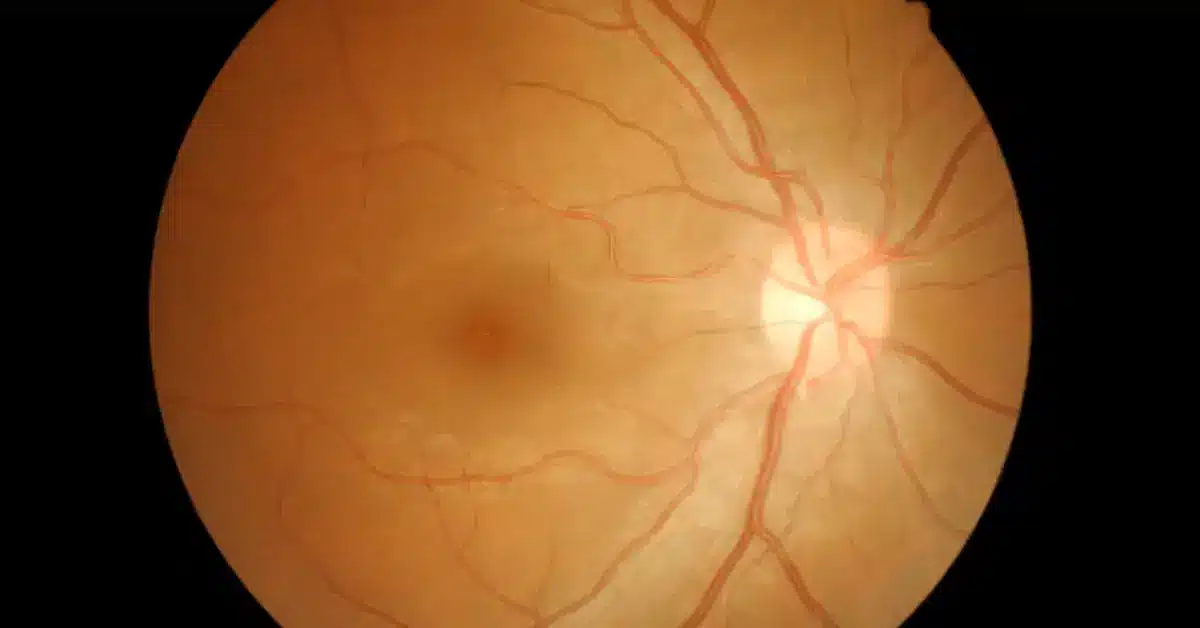Normal Optic Nerve: Understanding the Causes & Symptoms of Damage
The optic nerve comprises millions of nerve fibers that send messages about what you see to your brain so you can see.
An optic nerve that goes straight to your brain is at the back of each eye.
The optic nerve is a vital part of your ability to see.
It extends your central nervous system, which comprises your brain and spine.
Your eyes send electric signals to your brain through the optic nerve.
Your brain uses this information from your senses to make it possible for you to see.
Normal optic nerve vs Glaucoma

Traditionally, Glaucoma is seen as a primary optic nerve disease. This disease damages the optic nerve due to high Intraocular Pressure (IOP).
There are patients with apparent Glaucoma, with high pressure—and in most cases, if the IOP is low, the patient’s progression is lacking.
There is still a perception that Glaucoma is both an optic neuropathy as well as an irreversible neurodegenerative disease.
One issue when taking this approach is identifying normal-tension Glaucoma.
These are often neurodegenerative problems such as tumors or trauma to the optic nerve.
This can cause signs and symptoms causing normal-tension Glaucoma. It is, precisely, a loss of central vision that combines with visual field defects.
Sometimes, it doesn’t become clear that Glaucoma is not the cause of optic nerve degeneration.
It happens until standard Glaucoma treatment fails to fix the causes.
Symptoms of optic nerve damage
The symptoms of optic nerve damage can depend on the cause and severity of the injury.
Common symptoms include vision loss, blurred vision, difficulty seeing colors, and changes in peripheral vision.
Damage to the optic nerve can also cause pain in or around the eyes. These are also known to cause headaches.
Also Read: You can read the article, Recognizing and Understanding Optic Nerve Damage Symptoms.
Causes of Optic Nerve Damage
Optic nerve damage can occur due to various factors.
These include trauma, inflammation, infection, degeneration, and vascular disorders.

Inflammation
Inflammation is another common cause of damage to the optic nerve.
This can occur as a result of various underlying conditions.
These include autoimmune disorders, infections, and degenerative diseases.
Inflammation can damage the optic nerve by causing swelling, pressure, or damaging the nerve fibers.
Degeneration of optic nerve
Degenerative conditions can also damage the optic nerve.
One example of a degenerative condition that affects the optic nerve is Glaucoma.
It is a group of eye disorders recognized by damage to the optic nerve.
Glaucoma is often caused by increased pressure within the eye.
Over time, this damage can lead to vision loss and blindness.
Infection
Certain types of infections can directly affect the optic nerve.
In contrast, others can cause inflammation and swelling in the surrounding tissues.
For example, Meningitis, an infection, can directly affect the optic nerve.
Other infections leading to optic nerve damage include Lyme disease, Syphilis, and Tuberculosis.
Trauma
Trauma is among the leading causes of optic nerve damage.
This can result from a direct injury to the head or face.
A secondary effect of other injuries, like a car accident or sports injury, might also develop trauma.
In cases of direct injury, the optic nerve can be damaged due to physical trauma to the eye or the surrounding structures.
These structures include the bones of the skull and face.
This can cause nerve compression and stretch or may lead to various visual symptoms.
Vascular disorders
Vascular disorders affect the blood vessels and may lead to damage to the optic nerve.
A range of underlying diseases can cause this condition.
Also Read: You can go through the article, What Causes Optic Nerve Damage?
Conclusion
The standard optic nerve head varies from person to person, and there is often intraindividual variation.
Although, there are different symptoms and causes, which gives us an idea of optic nerve damage.
Detection of this problem early is fruitful to avoid any significant issues.
Frequently Asked Questions
What is a normal optic nerve?
An optic nerve is a group of more than a million nerve fibers. It sends and receives information about sight. You have one nerve from the back of each eye to your brain. If an optic gets damaged, it can make you lose sight.
What should a healthy optic nerve look like?
An average Optic Nerve Head (ONH) is round or oval. It is slightly raised, pink, and has a depression in the middle called the cup.
What is normal optic nerve size?
The size of standard optic nerve width (mean 13.63 mm, range: 11.13 mm–16.92 mm). On an MRI, the more prominent structures best show normal measurements of the structures in the front of the visual pathway.
WowRx uses only high-quality sources while writing our articles. Please read our content information policy to know more about how we keep our content reliable and trustworthy.






